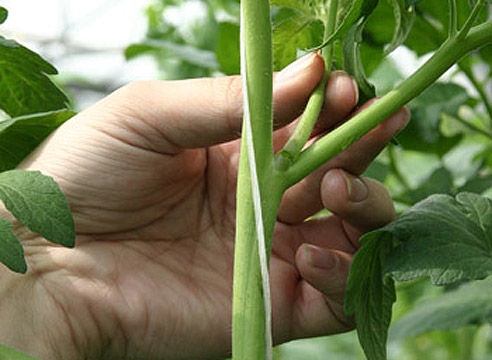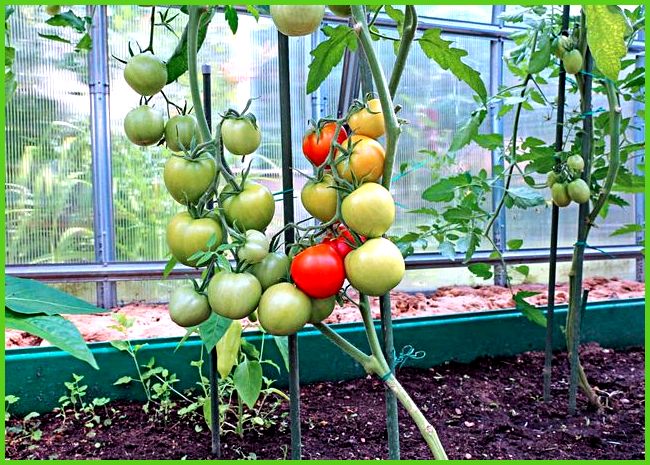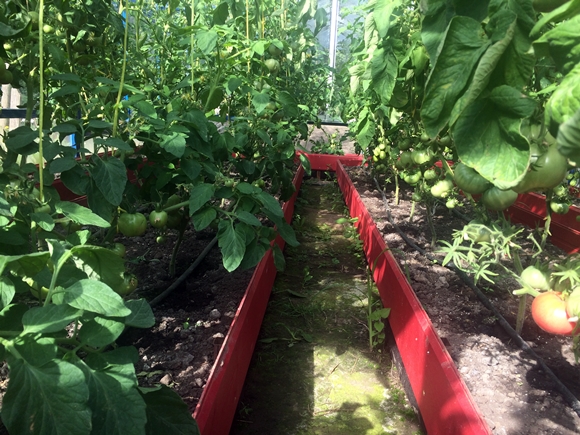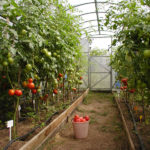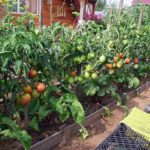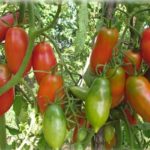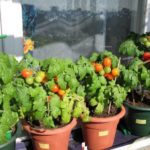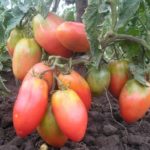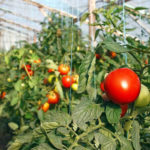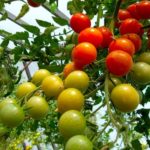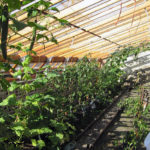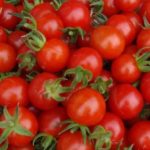For proper cultivation of tomatoes, knowing how to plant tomatoes in a greenhouse step by step plays an important role. If the procedure is not carried out, the plants will not have enough nutrients to form fruits. Then they will get a lot of green mass and a minimum of juicy tomatoes.
The purpose of stepsoning, the rules for its implementation
Stepsynching is the removal of excess side shoots growing from the axils of leaves, or stepsons. The purpose of stepsoning is considered to be:
- the formation of one or two plant stems;
- getting a quick tomato harvest;
- increasing the number of fruits per square meter of greenhouse;
- reducing the risk of infection by pathogenic fungi;
- prolongation of fruiting period.
The lateral shoots on the stem must be removed, as they interfere with the development of the fruiting part of the plant. Demanding as many nutrients as possible, they deprive the fruits of setting nutrition.
Proper pinching includes tearing off excess leaves before planting the seedlings in the greenhouse. And nine days after transplanting the seedlings indoors, the stepsons are planted a second time. Now this procedure is performed every other week. The main thing is to observe that the stepsons did not reach a length of more than five centimeters.
Before planting tomatoes in a greenhouse, the plant is not watered or fed.
Remove excess shoots with scissors or by unscrewing them by hand. After the procedure, a three-centimeter stump is left at the site of removal, which will not allow shoots to appear at this site. Tomatoes are planted in the greenhouse when the sun illuminates the room in the morning. After picking, the green mass is placed immediately on the garden bed. It will begin to decompose, releasing carbon dioxide. But if there is a possibility of infection with fungal diseases, then it is better to remove the torn branches from the room.
Stepson or fruit brush - how to distinguish
To grow tomatoes in a greenhouse, you need to understand what to pick off on the stems. If a gardener is poorly versed in the structure of a tomato bush, then shoots that bear fruit can be removed instead of shoots.
The extra shoot begins its growth from the axil of a leaf growing from the tomato stem. What begins to develop between the leaf and the trunk of the bush is the stepson.Parasitic shoots are especially active when the first flower clusters appear. Then they get those nutritional elements that are intended for setting tomatoes.
How to plant tall tomato varieties
Indeterminate tomatoes grown in a greenhouse environment, then they bear fruit for a long time, producing juicy tomatoes for four months. The peculiarity of planting them in greenhouses is the following:
- The bushes are planted in rows with a distance between them of one to one and a half meters, and between the plants themselves - thirty centimeters.
- For support, use either pegs or trellises with stretched wire or twine. The tension height is about two meters, as tomatoes grow quickly upward.
- It is best for an indeterminate species to grow in one stem, less often in two.
For the pinching procedure, the bush must be tied to pegs using string or twine. All stepsons are removed by removing one or two leaves every week. They get rid of the foliage at the bottom of the stem before the first fruits begin to set. In tall varieties, only the top will be untouched. For such a scheme for removing shoots, you need a high greenhouse and a large number of seedlings.
Some vegetable growers advise forming two stems to increase yield. Stepping in the greenhouse will then occur differently. The shoot running under the first inflorescence is left, and the rest are cut off. The resulting stem is tied to the main one.
Now there will be more fruits at the bottom of the tomatoes, and the upward movement of the stem will slow down. It is important to pinch the second stem and tie it in time.
The method of pinching into one stem is preferable for greenhouses. Carrying out a similar bush formation scheme will create more space in the room.Ventilation of the lower part of the plant will improve, and the tomatoes will receive enough light.
Which varieties are suitable for indoor soil?
Among tall tomatoes, the following indeterminate species produce high yields in greenhouses:
- From one bush of the Jane variety you can get up to five kilograms of large tomatoes. When pinching, the number of fruits increases.
- Small grape-shaped tomatoes of the Red Cherry variety are used for canning.
- In salads, the Jane hybrid has excellent taste.
- Chio chio san tomatoes were bred for greenhouses. In addition to its excellent taste, one can note the versatility of the plant’s purpose. The fruits are good in summer salads, pickling, pickling.
Tall tomatoes are considered ideal for a greenhouse. When pinching bushes is carried out correctly, the ripening of fruits is accelerated, and they bear fruit for a long time in closed ground. In addition, tall bushes are easy to care for.
We grow medium-sized and low-growing tomatoes
For semi-determinate types of vegetables that grow to an average height, a two-stem planting is chosen. The spare shoot will help improve fruiting if the main stem completes it quickly. If the main stem continues to set fruit after eight clusters, the second one can be removed. Otherwise, the developed stepson will take food from the fruiting branches.
Growing tomatoes in a medium-sized greenhouse requires the formation of three stems. In this case, a shoot is left under the first inflorescence, and then another, strong, well-developed one, under it. The rest of the stepsons clean up.
If there are only medium-sized varieties of tomatoes in the greenhouse, then most of them are processed into one stem. The rest, when they complete growth, form into several shoots.
Low-growing varieties of tomatoes, or determinate ones, are tried to be planted into one stem or not carried out the procedure at all. But it is precisely these plants that will delight you with early fruits if they form one stem. For this purpose, when cutting, only two or three inflorescences are left on the plant. After the last inflorescence, pinch off the top of the main shoot.
Super low-growing varieties bear fruit only on the first five or three inflorescences. Therefore, it is enough to leave two or three stems on the bushes. Each shoot can have up to three inflorescences. The more shoots left, the greater the likelihood that the fruits will not ripen on time.
The scheme for planting tomatoes in a greenhouse depends on how many stems need to be left and what they want to achieve - early fruiting, increasing its duration or creating comfortable conditions for tomatoes indoors.
Peculiarities of pinching for different varieties
Understanding how to properly plant tomatoes in a greenhouse arises because only a novice gardener can rejoice at a very overgrown bush. In return, he will receive small tomatoes, a lot of greens and little harvest. After all, to nourish the fruits you need a large amount of minerals and vitamins. Therefore, many varieties tomatoes require competent pinching. And the best option is the formation of one stem.
If there is little space in the greenhouses, then the fewer stems on the bush, the more comfortable the plants will feel. They will also receive nutrition from the soil, from the sun, from the air. Full illumination of tomato plantings will improve protein synthesis in plant cells. And good air circulation will ensure that tomatoes are not susceptible to late blight infection.
When plantings are dense, the likelihood of a fungal infection occurring and spreading increases many times over.
Tall types of tomatoes must be planted. How many stems to leave is determined by the behavior of the main shoot. If it stops growing, it is replaced by a spare stem. The bush that produces five to seven inflorescences produces the best harvest. During long summers, more fruit clusters are left.
Tall tomatoes in a polycarbonate greenhouse bush strongly, hence the need to control the growth process.
When caring for tomatoes, it is important not to miss the moment of pinching. Side shoots are removed before the first fruit cluster appears. Its imminent formation can be determined by the presence of the sixth or tenth leaf on the stem.
Weakly branching determinate varieties stop growing on their own. Therefore, it is worth cutting off the lateral processes until the moment when three brushes appear. In this case, only one stem is left. If the operation did not have time to be carried out, and the sprouts have already appeared, then two stems are left. One of them must be stronger. It is important that the brushes are located at a distance of two sheets from each other. Without proper formation there will be fewer clusters, which means the number of fruits will decrease.
The removal of excess shoots is completed in early August. The tops of the bushes are pinched. All that remains is to wait for the fruits to ripen.
Growing tomatoes in a greenhouse is an important point in caring for vegetables. There is no need to be afraid of this procedure. It is carried out quickly and will give impetus to the development of inflorescences and the rapid setting of fruits.

